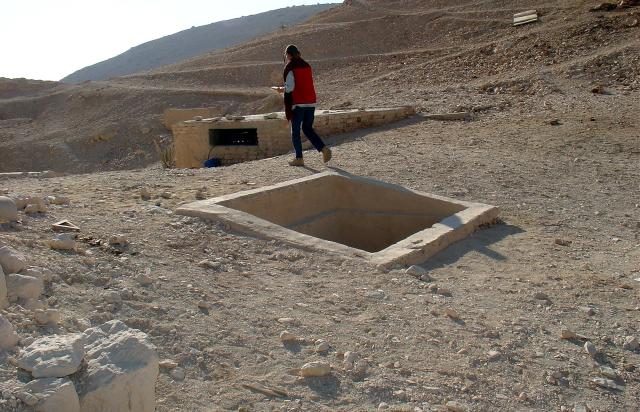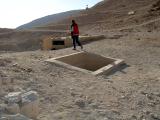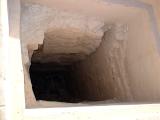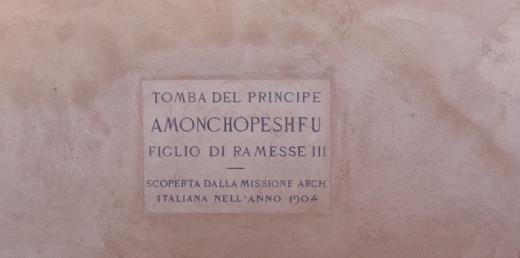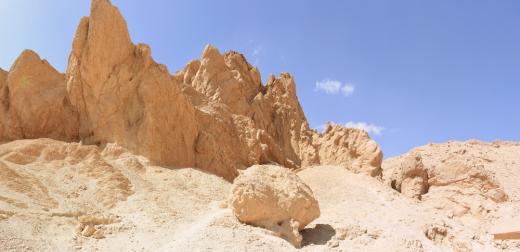QV 19
Anonymous
Entryway A
See entire tombShaft entrance has a modern masonry surround spanned by a metal grill or mesh.
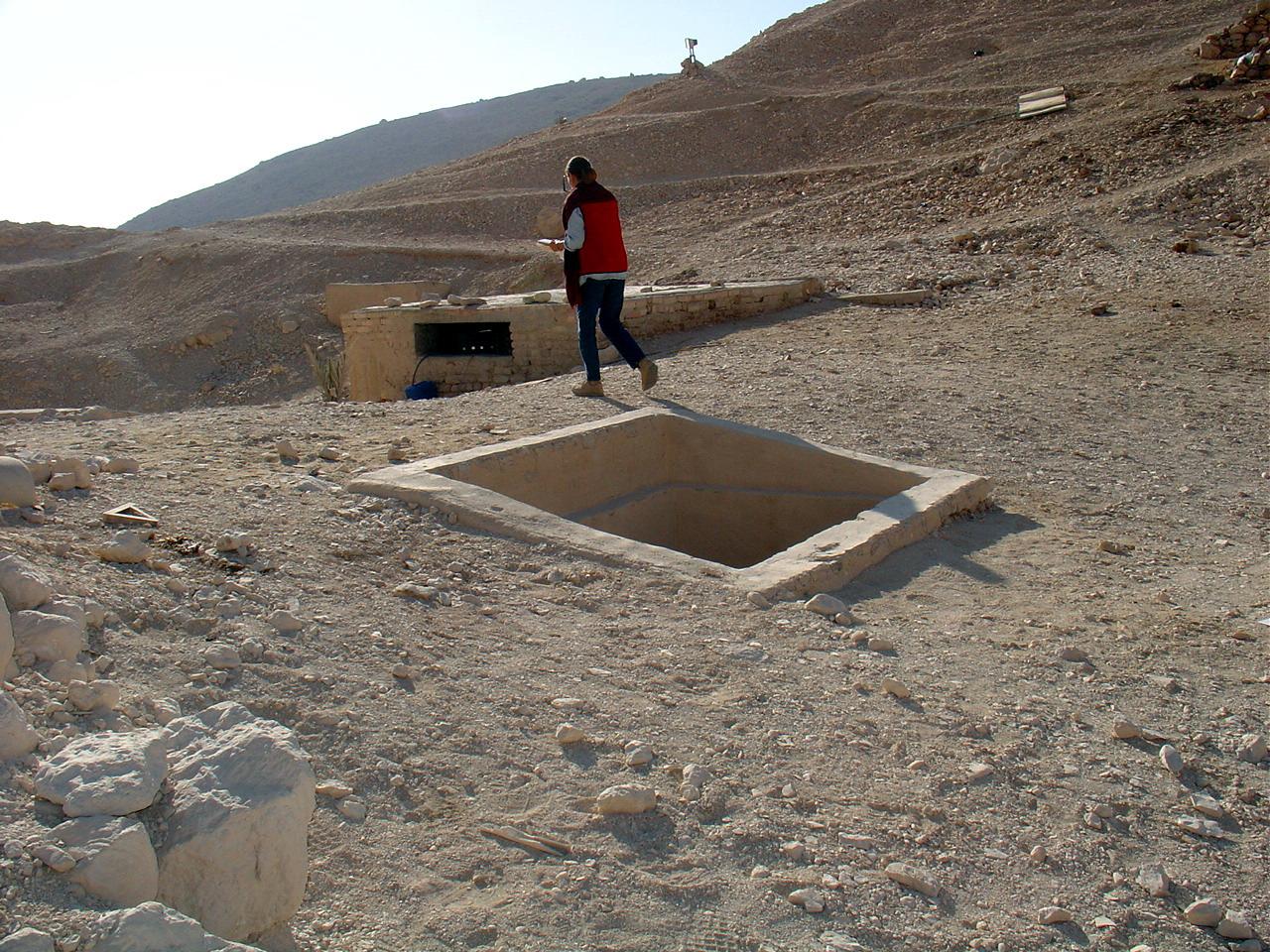
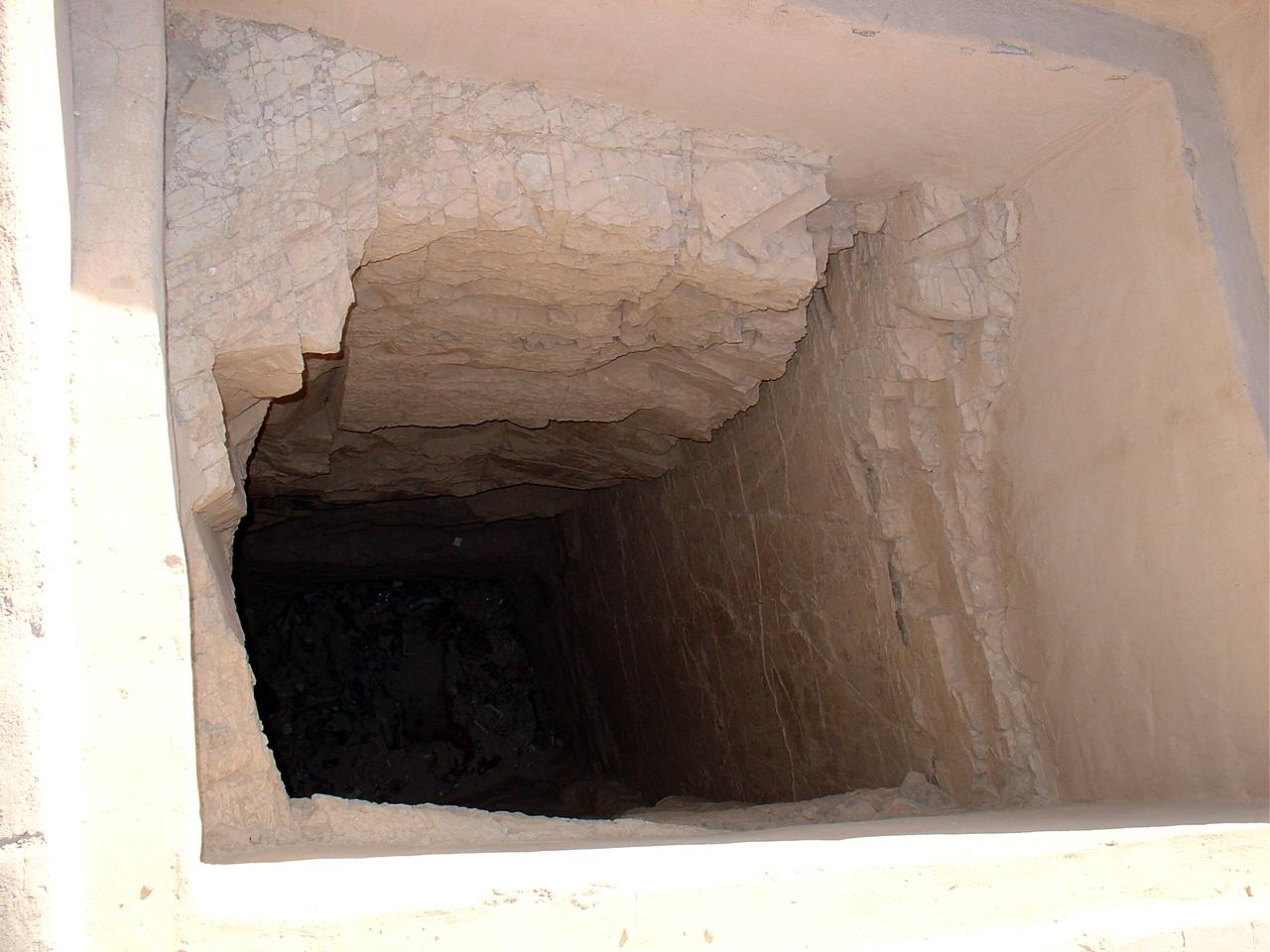
Chamber B
See entire tombA large roughly cut rectangular and undecorated chamber situated parallel to the tomb shaft (A). The tomb lies above QV 20, and chamber B is cut perpendicular to chamber B of QV 20 directly below.
About
About
QV 19 is a single-chambered shaft tomb located on the south side of the main Wadi. It lies atop a low mound along a secondary footpath and its chamber (B) is perpendicular to and partially overlies the chamber of QV 20. The shaft (A) has a modern masonry surround spanned by a metal grill or mesh. The owner is unknown.
Elizabeth Thomas (1959-60) was unable to enter the tomb, but noted that it had little debris fill and a typical layout, although its chamber was atypically large. She suggested that Ernesto Schiaparelli (1903-1905) may have cleared this tomb. The tomb was last cleared in 1987 by the Franco-Egyptian team and dated to the 18th Dynasty.
Site History
The tomb was constructed in the 18th Dynasty.
Dating
This site was used during the following period(s):
Exploration
Conservation
Site Condition
According to the GCI-SCA, the entire tomb is cut into relatively good quality marl, and appears generally stable. However, there is significant fissuring through the chamber both along its length and width, with substantial separation of rock at the upper rear wall of the chamber and within the shaft. One prominent fissure occurs midway between the entrance and the rear wall, extending continuously through the floor, ceiling, and both walls. This fissure was also noted by the Franco-Egyptian team at the time of their clearing campaign (1987). Since the rear half of QV 19 is immediately above the chamber of QV 20, the tomb was evaluated for signs of slumping and delamination by Hamza Associates in 2009. Joint planes throughout the tomb, including this fissure, appear to be a local manifestation of a more extensive movement in the bedrock, and no signs of ceiling slumping in QV 20 are evident. Wasp nests were also observed and are present on the surface of the rock, particularly the ceiling. Provided that QV 20 remains stable, QV 19 will also remain in stable condition.

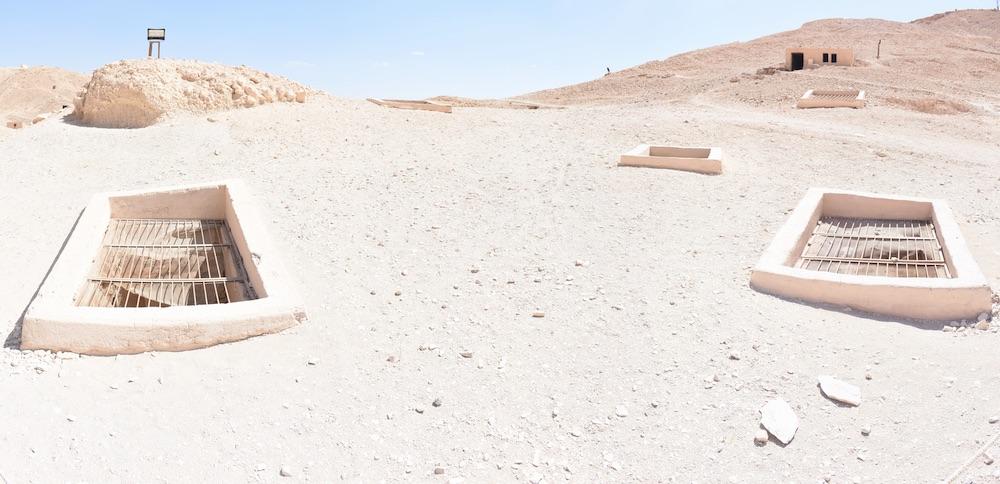
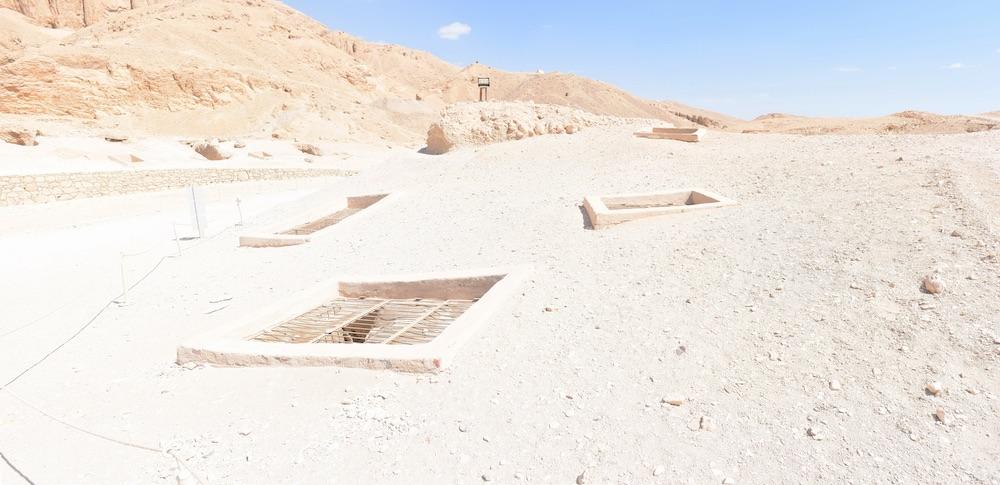




Articles
Tomb Numbering Systems in the Valley of the Queens and the Western Wadis
Geography and Geology of the Valley of the Queens and Western Wadis
Bibliography
CNRS mission report: Centre national de la recherche scientifique (France). Rapport d'activité 1987-1988 URA no. 1064, 1987-1988.
Demas, Martha and Neville Agnew (eds). Valley of the Queens. Assessment Report. Los Angeles: The Getty Conservation Institute, 2012, 2016. Two vols.
Thomas, Elizabeth. The Royal Necropoleis of Thebes. Princeton: privately printed, 1966.

